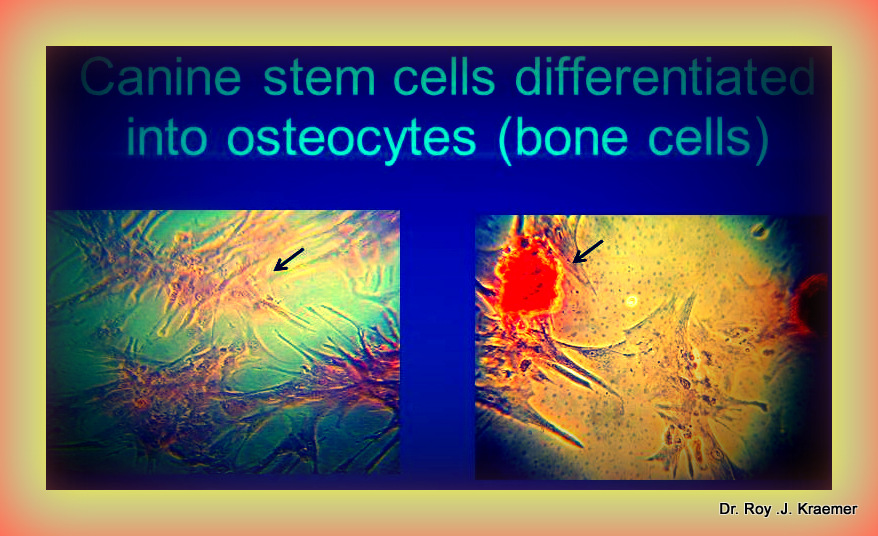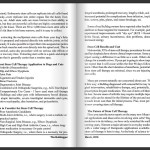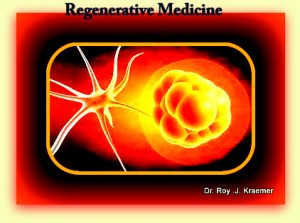Stem Cell Therapy for Dogs and Cats
Stem Cell Therapy for Dogs and Cats:
The Future of Pain Relief for Pets
Stem Cell Therapy for dogs and cats, bulldogs and other pets. Dr. R. Kraemer, veterinarian and owner of Vet4HealthyPet Advanced Medical Care Pet hospital located at 434 South Tustin Street at the City of Orange in Orange County, California, has provided veterinary services since 1992 for dog, cat and other pet owners and is now a leading provider for stem cell therapy for dogs and cat. Due to increased demand, Dr. Kraemer is expanding the offer for this groundbreaking, regenerative medicine and cryobanking to pet owners from anywhere in the State of California, as well as those out of state who are unable to find Stem Cell treatment/therapy for dogs and cats (their pets) from their local veterinarians.
Stem Cells for dogs and cats are extracted from your pet’s fatty tissue, and processed with Platelet Rich Plasma (PRP) into an injectable solution, which is then activated using LED Light technology. Following activation, the solution is then injected intra-articular (i.e. directly into arthritic joints) as well as intravenously. This is a same day procedure with no serious side effects, no extensive recovery time, or confinement needed.
Stem Cell Therapy for Dogs and Cats: Dr. Kraemer is a leading provider for Stem Cell Therapy treatment for dogs and cats (pets)
THE HEALING POWER OF STEM CELLS
Economical
Quality of Life Enhancement
Minimal Confinement
Minimal Post-Op Recovery Time
No Post-Op Rehabilitation
Current Stem Cell Therapy Application in Dogs and Cats
- Arthritis (Osteoarthritis)
- Hip Dysplasia
- Elbow Dysplasia
- Joint Pain
- Ligaments Injuries
- Tendons Injuries
- Fractures
- Degenerative Joint Disease
- Combined with Orthopedic Surgeries (i.e. TPLO and Extra Capsule for ACL Tare Repair)
Stem Cell Therapy for dogs and cats Compassionate Use Cases to our Companion pets

Stem Cell Therapy by Dr. Kraemer for Arthritis, Hip Dysplasia and Degenerative Joint disease in Pets
Promising results for stem cell therapy for dogs and cats currently shown in Clinical trials-Case studies-Peer review-Compassionate use:
- Inflammatory Bowel Disease (IBD) in pets and Bulldogs
- Atopic Dermatitis (Alleric Dermatitis) in dogs and bulldogs puppies
- Chronic Kidney Disease in dogs and cats
- Renal dysplasia in dogs and bulldogs
- Degenerative Myelopathy in dogs and bulldogs
- Polyarthritis in dogs and bulldogs
- Orthopedic and Soft Tissue in pets
- Diabetes Type II in dogs and cats
- Rheumatoid and Osteoarthritis Arthritis in dogs and cats
- Multiple Sclerosis in pets
- Autoimmune Diseases in dogs and cats
- chronic obstructive pulmonary disease (COPD) in dogs and cats
- Pulmonary Fibrosis in dogs and cats
- Chronic Bronchitis in pets
- Stroke in pets
- Stress urinary incontinence caused by urethral sphincteric deficiency in bulldogs and dogs
- Keratoconjunctivitis Sicca or “Dry Eye” (KCS) in bulldogs and dogs
Stem Cells For Dogs and Cats Q&A with SCBR Bulldog Owners – Success Stories

Dr. Kraemer extracting the stem cells from his pet patient adipose tissue
I sat down for a Q&A with three bulldog rescue members who whose pets I have treated with stem cells for various medical conditions. Southern California Bulldog Rescue is a non for profit rescue organization dedicated to providing deserted and abused bulldogs with medical care, housing, and placement with new families. I have a close relationship with SCBR and have been providing medical care for their rescued pets for many years and shelter and at my new 434 south Tustin street, orange, Ca. veterinary hospital. If you would like to help SCBR and bulldog rescue, we invite you to join our U4B Pledge. SCBR also accepts donations, which are deductible to the full extent of the law.
Vicky (SCBR): Dr. Kraemer what are stem cells?
Dr. Kraemer Answers (StemCell4Pet.com): Stem cells are the body’s repair cells we all have waiting to be called on when injury occurs and as our body ages (wear & tear). Stem Cells have the ability to divide and differentiate into many different types of cells based on where they are needed throughout the body. Stem cells can divide and turn into tissues such as skin, fat, muscle, bone, cartilage, and nerve, to name a few. They even possess the ability to replicate into organs such as the heart, liver, intestines, pancreas, etc.
Ronnie (SCBR): What the term “Regenerative Medicine” means?
Dr. Kraemer Answers (DrKraemers.com): Its the use of our own cells to augment or stimulate the body’s natural healing processes. Regenerative medicine is the process of creating living, functional tissues to repair or replace tissue or organ function lost due to age, disease, damage, or congenital defects.
Nicole (SCBR): A friend of mine had banked her newborn child stem cells from her own placenta and umbilical cord, are yours the same kind of stem cells?
Dr. Kraemer Answers (Vet4HealthyPet.com): There are two basic types of stem cells; embryonic and somatic (adult). Embryonic Stem Cells are found in the placenta, umbilical cord and embryo, these cells are called totipotent, which means they have the ability to reproduce into any mature cell type. While Embryonic Stem Cells offer the greatest potential in healing, there are obviously moral and ethical concerns in harvesting these cells.
The second type of stem cell is the Adult Stem Cell, these stem cells are called multipotent, which means they can differentiate into closely related cell lines, but they are not capable of creating a complete organ. Adult Stem Cells are found in the bone marrow, adipose tissue (fat), skin, liver, blood vessels, and neurons. Contrary to embryonic stem cells, there are NO moral or ethical concerns in harvesting Adult Stem Cells, activating them, and reintroducing them back to the patient in areas where healing and regeneration is needed.
Ronnie (SCBR): So Dr. Kraemer why you prefer extracting the stem cells from adipose (fat) tissue?

Dr. Kraemer treating a dog patient with stem cell therapy for joint disease and arthritis
Dr. Kraemer Answers (Stem Cell Therapy for dogs and cats): Adult stem cells are highly concentrated in the fat tissue. There are 50 to 1,000 times more stem cells in the fat than the bone marrow. At this concentration, it is no longer necessary to culture the stem cells to acquire the necessary cell numbers to make a healing impact. Compare to harvesting from bone marrow Adipose tissue is easier to get, less painful and involve lower risk while yielding many more stem cells compared to bone marrow. On matter of speed and degree of risk this procedure (i.e. to extract fat from your pet) is much quicker and less invasive than even a routine spay. The stem cells are contained within a pool of cells in the fat termed the Stromal Vascular Fraction (SVF) which includes bone marrow stromal cells and mesenchymal cells along with many beneficial proteins that on cellular level encourage:
- Bone formation
- Live cell regeneration
- Nervous system regeneration
- Wound healing
- Vascular rebuilding
- Skin repair
- Damaged cell to repair themselves
- Cell re-growth

Stem Cell in action (microscopic view)
Nicole (SCBR): Dr. Kraemer, can you explain how Stem Cells work and how would they help our pets?
Dr. Kraemer Answers (Stem Cell Therapy for dogs and cats): Stem Cells work like heat-seeking guided missiles, only in this case they are seeking damaged, injured, aging cells in urgent need of repair. Their repair abilities are multi-factorial which include among other,
- Stimulation of local progenitor to replace damaged tissue,
- Anti- inflammatory capacity
- Stimulation of blood vessels formation
- A direct effect on the immune cells and immune response.
Adult stem cells are capable of dividing into many different cell types. With this capability, we can use them as a treatment for joint injuries, ligament, tendon damage, and fractured bones. Stem Cell therapy also has shown promise for renal disease, dermatological conditions, and muscle tear repair.
Ronnie (SCBR): Which dogs and cats are the best candidates for Stem Cell Treatments?
Dr. Kraemer Answers: Dogs and cats that have not responded well to non-steroidal anti-inflammatory (NASID) drugs and other pain medication and continue to suffer from debilitating pain.

Stem Cells in action at the cellular level
- Long term pain management for cats is very limited, since NASID are not safe and other effective drugs are limited to steroids which have many risky side effects. In addition, for most cat owners oral Rx is very difficult to administer.
- Dogs and Cats that cannot tolerate non-steroidal anti-inflammatory drugs due to gastric, renal, liver or any other adverse drug effect.
- Dogs and Cats that are likely to need long-term medications for pain (high cost and the increased potential of adverse unwanted effects).
- Dogs and Cats that are not good candidates for orthopedic surgery due to age or health concerns (i.e. prolonged anesthesia, prolonged recovery, need for lengthy rehab, potential for complications such as infection, implant migration, screws, pins, plates and suture breakage, etc).
- Young pets with arthritis.
- Pets suffering from a multi-joint arthritis where surgery is not a realistic or practical option.
Vicky (SCBR): Dr. Kraemer what makes the stem cell technology you are implementing superior to other stem cell therapies currently available in veterinary practice?
Dr. Kraemer Answers (Stem Cell Therapy for dogs and cats): I am one of the few doctors in our area who are certified by MediVet America’s technology. MediVet is a patented L.E.D. technology incorporating Platelet-Rich Plasma (PRP)– the same treatment used by many sports professionals. MediVet America is able to acquire the most living stem cells of any company currently offering this technology. There is no stem cell lost due to transportation and poor handling since I have my own in-house fully equipped specialized laboratory. That is a big advantage over all the other systems since they require you to ship the fat to an outside lab for the extraction and processing. This delay will cause cell death and force the client to bring his pet back the next day for the final injectable process (i.e. treatment) .
Nicole (SCBR): Can stem cells be banked and used again to treat future problems and repeat treatments?
Dr. Kraemer answers (Stem Cell Therapy for dogs and cats): In collaboration with MediVEt America I offer Cryobanking, where you can store extra cells from the procedure for future use. Many of our clients who’ve had their pet treated with stem cells opted to cryobank some or their pet’s stem cells for future treatments. Most of the time we can get up to six additional treatments from the cryobanked stem cells.
Ronnie (SCBR): Dr. Kraemer, can you tell us how long the procedure takes and what it entails?

Dr. Kraemer holding a Platelet Rich Plasma (PRP) vial ready to be mixed up with his patient stem cells
Dr. Kraemer Answers (Stem Cell Therapy for dogs and cats): The day of the procedure you will bring your pet to our Animal Hospital. We will first fit them with an IV catheter through which we will administer fluids and pre-op pain medication. We will then anesthetize your pet just long enough (about 15 min) so as to alflow me to surgically remove a couple of tablespoons of fat. This is a quick and simple procedure that is generally easier than performing a typical spay. Dr. Kraemer and his staff at the Animal Hospital will then process the fat at the in-house lab in order to extract the stem cells using MediVet patented kit. They will then be mixed with Platelet Rich Plasma extracted from your pet’s own blood. The whole process takes a couple of hours. Just before those final highly concentrated, pure stem cells are ready to be injected, we will activate them to become supercharged (i.e. super-excited) with a special L.E.D light. During the final step your pet will be mildly sedated, and will receive pain medication for comfort. The stem cells will then be administered into the affected joints and/or into the bloodstream intravenously. It is important that you do not feed your pet the night before the procedure
Vicky (SCBR): Dr. Kraemer, do you guarantee success, and how soon is it before most pet owners will notice an improvement?
Dr. Kraemer Answers (Stem Cell Therapy for dogs and cats): There are no guarantees, as each pet is different. Nationwide, 95% of procedures for osteoarthritis and hip dysplasia have shown clinical improvement. Some pet owners report seeing a difference in as little as a week. Others do not see a change for a month or two. If your pet is going to show improvement, we expect that it will occur within the first 90 days following treatment. Really bad arthritis may require multiple injections, so banking your extra cells is always a good idea.
Nicole (SCBR): Dr. Kraemer can you go over any safety concerns some pet owners might have?
Dr. Kraemer Answers (Stem Cell Therapy for dogs and cats): As with any procedure that involves anesthesia, even one with as short of duration as this one, there is always some risk factor involved. However, the stem cells are coming from your pet (“Autologous”) and are being re-administered back to your pet. There is no risk of an allergic reaction, no cell rejection or disease transmission. Rarely, there might be a mild immune reaction in the injected joint that should subside within a day or two.
Ronnie (SCBR): I think most of us who have had our pet treated are excited about this new age therapeutic modality, yet cost is still an important factor in a pet owner’s final decision. Can you tell us how much will this cost?

Dr. Kraemer actives (super charges) his patient stem cells with LED light
Dr. Kraemer Answers (Stem Cell Therapy for dogs and cats): Think about it this way, a young pet diagnosed with osteoarthritis may require surgical intervention, rehabilitative therapy, and potential lifelong prescription for pain medication. The cost of Stem Cell therapy would be less, and cells can be stored for the lifetime of the animal and used again at a much lower cost than the initial process. It’s also important to remember the potential complications with surgeries like infection, implant failure and soft tissue trauma, plus recovery is lengthy after surgery and requires weeks of strict confinement. And in regards to long term pain management medication, even the new generation pain relief drugs can have adverse effects, require monitoring, and, in some cases, can lead to serious health complications. Our Pet Hospital offers two different sized stem cell kits for pets.
- A small stem cell kit:that usually generate 2 ml of the final pure stem cell solution. Its ideal for small dogs and cats since the maxmium amount alowed per joint in small pets is 0.25ml. In medium and large size dogs the maximum amount per joint is 0.5ml, thus I only recommend a small kit for the larger dogs when only one or two joints are going to be injected.
- A large stem cell kit: that usually generate 4 ml (double the volume generated by the small kit) and is the ideal size for most dogs especially if some is going to be stored for future treatments (i.e. cryobanking)
The difference in cost between the two kits is ONLY 300 dollars (i.e. double the stem cells for only an additional 15% extra above the small kit cost). Hence, for most cases the LARGE stem cell kit is by far the better choice, allowing us to inject the maximum amount to multiple joints and still have plenty left to give intravenously or/and store (cryobank) some for years to come.
Ronnie (SCBR): Speaking about cost, is stem cell therapy covered by the various pet insurances?
Dr. Kraemer Answers (Stem Cell Therapy for dogs and cats): Great question and very timely. Yes most pet insurance companies cover stem cells in treatment as long as the disease itself is covered by the policy.
Nicole (SCBR): Lately I have been hearing on the news about many new life saving medical applications and discoveries with stem cells. How do you see the future of stem cell therapy?
Dr. Kraemer Answers (Stem Cell Therapy for dogs and cats): I am glad you brought it up Nicole. Regenerative medicine is in its infancy, and has unlimited potential. In the coming years, I foresee a major advance into every day practice with a much wider range of therapeutic applications available. So I believe it is here to stay. As the body of science in veterinary stem cell therapy increases, I envision more and more pet owners opting for collecting stem cells prophylactically when their pet is being spayed or neutered, and storing the cells for later indications and uses. Future science will likely prove that stem and regenerative cell therapies should be part of multimodal approaches to increase chances for the best outcome for many veterinary patients.

Dr. Kraemer is a leading provider of stem cell therapy for the use of Osteoarthritis injuries and pain in pets
Vicky (SCBR): Thank you, Dr. Kraemer, for your time and for all the help you and your staff have provided our rescue over the years. I also wanted to personally thank you and MediVet of America for what you did for our “Piper”, if it was not for stem cell therapy she would have not been with us. You made me a believer. Any final thoughts?
Dr. Kraemer (Stem Cell Therapy for dogs and cats): Thank you Vicky for the kind words, it is a true privilege to be part of the SOUTHERN CALIFORNIA BULLDOG RESCUE organization. In veterinary medicine, while many of the “compassionate” cases’ outcomes are anecdotal, we still lack solid scientific trials to prove efficiency, though more of them are being conducted now by universities around the country. Stem cells have already shaped the contemporary medicine of humans and should, sometime soon, do the same in veterinary medicine, with more clinical trials done in laboratory settings. I have been treating “compassionate” cases who came to me after traditional medicine “failed”, leaving them with euthanasia as the only human option. Such was the case of Vicky’s (Southern California Bulldog Rescue) “Piper” an English bulldog who was treated by multiple internal medicine specialists for IBD (inflammatory bowel disease) for over seven months, prescribed multiple immune suppressant steroids, antibiotics, and a handful of other drugs, homeopathic remedies and special diets and yet continued to show no improvements. Piper was down to 23lb, with protruding bones and explosive, non-responsive diarrhea. To read more about Piper’s amazing story , click here. Among many other compassionate cases, I have also treated a 13 year old Degenerative Myelopathy, a grave, non-treatable condition that was sent home after an MRI with no hope. I also treated an English bulldog with non-responsive, erupting and painful interdigtial cysts who developed serious complications due the immune suppressant drugs he was on, and other cases, many of which I will present on this site in coming weeks.

In summary
I would like to say that we can all eat healthy, exercise regularly and learn to relax in order to improve our life quality and increase longevity. The same goes for our pets. But as most of us are painfully aware, injuries and illness could happen despite our best efforts to live a healthy lifestyle. Many times surgery will be recommended, and there are certainly many times when surgery is appropriate and needs to be performed. We should all be VERY grateful we have access to this tool. Nevertheless, I am a big advocate and strongly believe in awareness of other, less invasive, safer, often less costly, effective, alternative options. The latest therapeutic modalities like stem cell therapy, Platelet Rich Plasma, and class-4 Cold Laser Therapy are here to stay, and it’s only the beginning. I predict that in the coming decade, those new age modalities will be main stream and an integral part of every hospital’s medical services. With the rise of regenerative medicine it is sufficient to say that you are witnessing the emergence of a completely new age in healing and certainly a total paradigm shift in veterinary health care.






